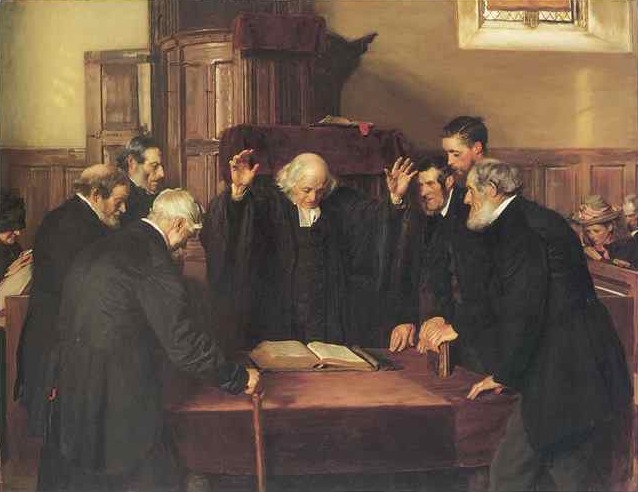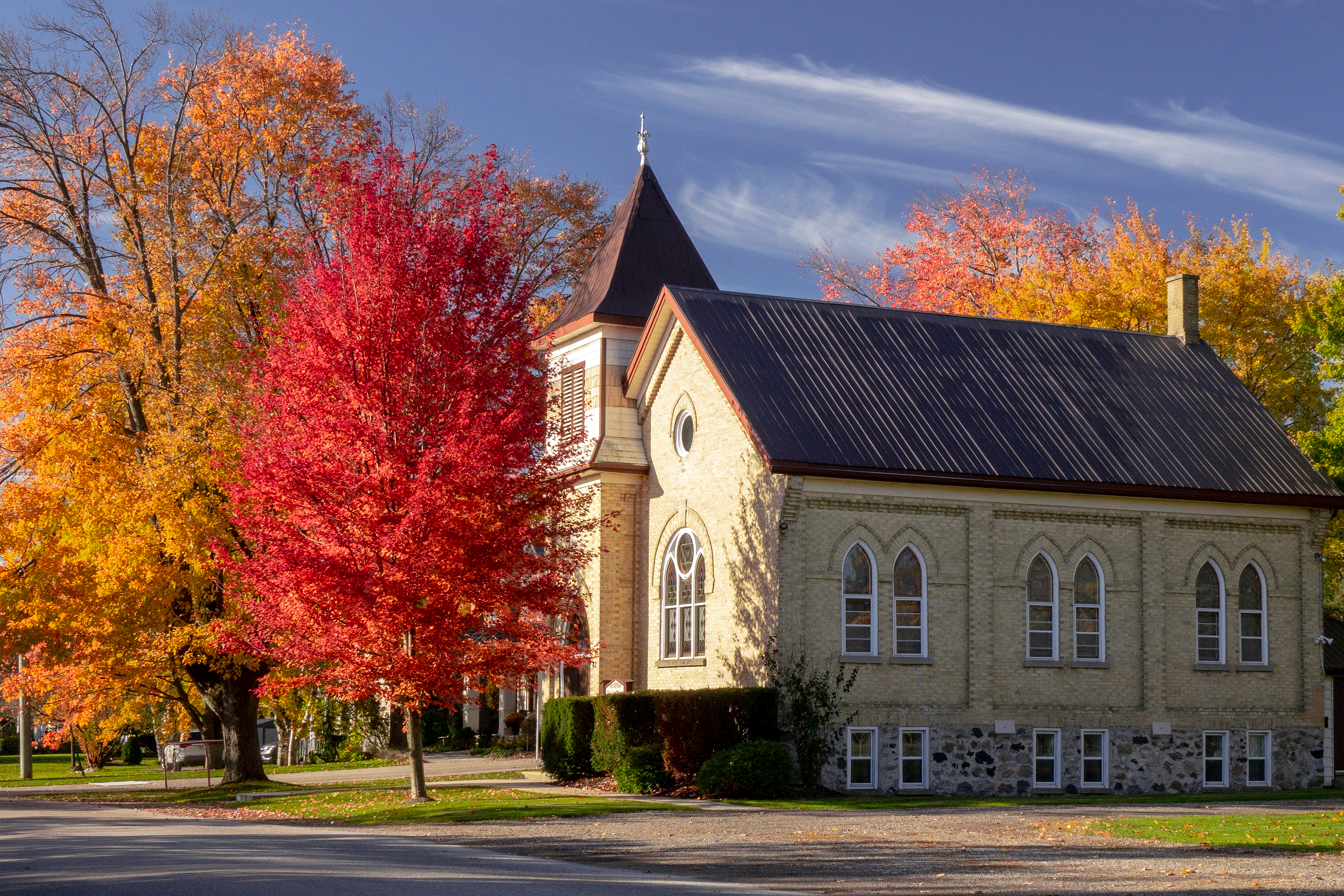|
Whitevale, Ontario
Whitevale, formerly Majorville, is a community located within the City of Pickering in Durham Region, Ontario, Canada. The city refers to the community as the "Hamlet of Whitevale". History Whitevale was an excellent example of nineteenth-century industry concentrating by a power source and then expanding of its own accord.Pickering Public Library Local History Collection Settlement The community was first settled in the 1820s when John Major built a sawmill. The community was known as Major or Majorville, because of the mill and the number of Majors who lived close by on the 5th Concession line. Around 1855 Truman P. White bought the saw mill, built a gristmill and a cooperage; and in 1866 built a planing factory. The community owed so much of its development and business prosperity to T.P. White that in acknowledgement, it adopted Whitevale as its permanent designation.Wood, W.R. (1911). Past Years in Pickering. Toronto: William Briggs. Growth The newly named community ... [...More Info...] [...Related Items...] OR: [Wikipedia] [Google] [Baidu] |
Hamlet (place)
A hamlet is a human settlement that is smaller than a town or village. Its size relative to a Parish (administrative division), parish can depend on the administration and region. A hamlet may be considered to be a smaller settlement or subdivision or satellite entity to a larger settlement. The word and concept of a hamlet has roots in the Anglo-Norman settlement of England, where the old French ' came to apply to small human settlements. Etymology The word comes from Anglo-Norman language, Anglo-Norman ', corresponding to Old French ', the diminutive of Old French ' meaning a little village. This, in turn, is a diminutive of Old French ', possibly borrowed from (West Germanic languages, West Germanic) Franconian languages. Compare with modern French ', Dutch language, Dutch ', Frisian languages, Frisian ', German ', Old English ' and Modern English ''home''. By country Afghanistan In Afghanistan, the counterpart of the hamlet is the Qila, qala (Dari language, Dari: ... [...More Info...] [...Related Items...] OR: [Wikipedia] [Google] [Baidu] |
Gristmill
A gristmill (also: grist mill, corn mill, flour mill, feed mill or feedmill) grinds cereal grain into flour and Wheat middlings, middlings. The term can refer to either the Mill (grinding), grinding mechanism or the building that holds it. Grist is grain that has been separated from its chaff in preparation for grinding. History Early history The Greek geographer Strabo reports in his ''Geography'' a water-powered grain-mill to have existed near the palace of king Mithradates VI Eupator at Cabira, Asia Minor, before 71 BC. The early mills had horizontal paddle wheels, an arrangement which later became known as the "Water wheel#Vertical axis, Norse wheel", as many were found in Scandinavia. The paddle wheel was attached to a shaft which was, in turn, attached to the centre of the millstone called the "runner stone". The turning force produced by the water on the paddles was transferred directly to the runner stone, causing it to grind against a stationary "Mill machinery#Wat ... [...More Info...] [...Related Items...] OR: [Wikipedia] [Google] [Baidu] |
Gothic Revival Architecture
Gothic Revival (also referred to as Victorian Gothic, neo-Gothic, or Gothick) is an architectural movement that began in the late 1740s in England. The movement gained momentum and expanded in the first half of the 19th century, as increasingly serious and learned admirers of the neo-Gothic styles sought to revive medieval Gothic architecture, intending to complement or even supersede the neoclassical styles prevalent at the time. Gothic Revival draws upon features of medieval examples, including decorative patterns, finials, lancet windows, and hood moulds. By the middle of the 19th century, Gothic had become the preeminent architectural style in the Western world, only to fall out of fashion in the 1880s and early 1890s. The Gothic Revival movement's roots are intertwined with philosophical movements associated with Catholicism and a re-awakening of high church or Anglo-Catholic belief concerned by the growth of religious nonconformism. Ultimately, the "Anglo-Catholicism" t ... [...More Info...] [...Related Items...] OR: [Wikipedia] [Google] [Baidu] |
Greek Orthodox Church
The term Greek Orthodox Church (Greek: Ἑλληνορθόδοξη Ἐκκλησία, ''Ellinorthódoxi Ekklisía'', ) has two meanings. The broader meaning designates "the entire body of Orthodox (Chalcedonian) Christianity, sometimes also called 'Eastern Orthodox,' 'Greek Catholic,' or generally 'the Greek Church. The narrower meaning designates "any of several independent churches within the worldwide communion of asternOrthodox Christianity that retain the use of the Greek language in formal ecclesiastical settings". Etymology Historically, the term "Greek Orthodox" has been used to describe all Eastern Orthodox churches, since the term "Greek" can refer to the heritage of the Byzantine Empire. During the first eight centuries of Christian history, most major intellectual, cultural, and social developments in the Christian Church took place in the Byzantine Empire or its sphere of influence, where the Greek language was widely spoken and used for most theological writin ... [...More Info...] [...Related Items...] OR: [Wikipedia] [Google] [Baidu] |
Presbyterian Polity
Presbyterian (or presbyteral) polity is a method of church governance ("ecclesiastical polity") typified by the rule of assemblies of presbyters, or elders. Each local church is governed by a body of elected elders usually called the session or ''consistory'', though other terms, such as ''church board'', may apply.For example, the Church of the Nazarene, which subscribes to a body of religious doctrines that are quite distinct from those of most properly named Presbyterian denominations (and which instead descends historically from the Wesleyan Holiness Movement), employs a blend of congregationalist, episcopal, and presbyterian polities; its local churches are governed by an elected body known as the church board or simply "board members"; the term elder in the Nazarene Church has a different use entirely, referring to an ordained minister of that denomination. Groups of local churches are governed by a higher assembly of elders known as the presbytery or classis; presbyter ... [...More Info...] [...Related Items...] OR: [Wikipedia] [Google] [Baidu] |
Pickering Airport
The Pickering Airport Lands were expropriated in 1972 by the Government of Canada with the intention of building a second international airport to serve the city of Toronto, its metropolitan area, and the surrounding region known as the Golden Horseshoe in Ontario, Canada. The airport was planned to be set in the city of Pickering, Ontario, about east of Toronto Pearson International Airport. As of December 2019 no operator had been selected. In 2004, the estimated cost of building the airport was reported to be approximately $2 billion, and it was anticipated that, by 2032, it would be handling up to 11.9 million passengers annually. The plans for the airport were developed during the late 1960s and early 1970s. A large tract of land in Pickering, Uxbridge, and Markham townships was expropriated for the airport in 1972–1973. Opposition to the project was widespread. Preliminary airport construction activity was halted in 1975 when the provincial partner in the enterprise, the ... [...More Info...] [...Related Items...] OR: [Wikipedia] [Google] [Baidu] |
Ontario Government
The government of Ontario (french: Gouvernement de l'Ontario) is the body responsible for the administration of the Canadian province of Ontario. A constitutional monarchy, the Crown—represented in the province by the lieutenant governor—is the corporation sole, assuming distinct roles: the executive, as the ''Crown-in-Council''; the legislature, as the ''Crown-in-Parliament''; and the courts, as the ''Crown-on-the-Bench''. The functions of the government are exercised on behalf of three institutions—the Executive Council; the Provincial Parliament (Legislative Assembly); and the judiciary, respectively. Its powers and structure are partly set out in the ''Constitution Act, 1867''. The term ''Government of Ontario'' refers specifically to the executive—political ministers of the Crown (the Cabinet/Executive Council), appointed on the advice of the premier, and the non-partisan Ontario Public Service (whom the Executive Council directs), who staff ministries and agen ... [...More Info...] [...Related Items...] OR: [Wikipedia] [Google] [Baidu] |
United Church Of Canada
The United Church of Canada (french: link=no, Église unie du Canada) is a mainline Protestant denomination that is the largest Protestant Christian denomination in Canada and the second largest Canadian Christian denomination after the Catholic Church in Canada. The United Church was founded in 1925 as a merger of four Protestant denominations with a total combined membership of about 600,000 members: the Methodist Church, Canada, the Congregational Union of Ontario and Quebec, two-thirds of the congregations of the Presbyterian Church in Canada, and the Association of Local Union Churches, a movement predominantly of the Canadian Prairie provinces. The Canadian Conference of the Evangelical United Brethren Church joined the United Church of Canada on January 1, 1968. Membership peaked in 1964 at 1.1 million and has declined since that time. From 1991 to 2001, the number of people claiming an affiliation with the United Church decreased by 8%, the third largest decrease in ... [...More Info...] [...Related Items...] OR: [Wikipedia] [Google] [Baidu] |
Dedication
Dedication is the act of consecrating an altar, temple, church, or other sacred building. Feast of Dedication The Feast of Dedication, today Hanukkah, once also called "Feast of the Maccabees," is a Jewish festival observed for eight days from the 25th of Kislev (usually in December, but occasionally late November, due to the lunisolar calendar). It was instituted in the year 165 B.C. by Judas Maccabeus, his brothers, and the elders of the congregation of Israel in commemoration of the reconsecration of the Jewish Temple in Jerusalem, and especially of the altar of burnt offerings, after they had been desecrated during the persecution under Antiochus Epiphanes (168 BC). The significant happenings of the festival were the illumination of houses and synagogues, a custom probably taken over from the Feast of Tabernacles, and the recitation of . According to the Second Book of Chronicles, the dedication of Solomon's Temple took place in the week before the Feast of Tabernacles. ... [...More Info...] [...Related Items...] OR: [Wikipedia] [Google] [Baidu] |
Methodist Church
Methodism, also called the Methodist movement, is a group of historically related Christian denomination, denominations of Protestantism, Protestant Christianity whose origins, doctrine and practice derive from the life and teachings of John Wesley. George Whitefield and John's brother Charles Wesley were also significant early leaders in the movement. They were named ''Methodists'' for "the methodical way in which they carried out their Christian faith". Methodism originated as a Christian revival, revival movement within the 18th-century Church of England and became a separate denomination after Wesley's death. The movement spread throughout the British Empire, the United States, and beyond because of vigorous Christian mission, missionary work, today claiming approximately 80 million adherents worldwide. Wesleyan theology, which is upheld by the Methodist churches, focuses on sanctification and the transforming effect of faith on the character of a Christians, Christian ... [...More Info...] [...Related Items...] OR: [Wikipedia] [Google] [Baidu] |
Wesleyan Church
The Wesleyan Church, also known as the Wesleyan Methodist Church and Wesleyan Holiness Church depending on the region, is a Methodist Christian denomination in the United States, Canada, the United Kingdom, South Africa, Namibia, Sierra Leone, Liberia, Indonesia, and Australia. The church is aligned with the Wesleyan-Holiness movement and has roots in the teachings of John Wesley. It adheres to Wesleyan-Arminian theology, Wesleyan-Arminian doctrine and is a member of the World Methodist Council. Near the end of 2014, the Wesleyan Church had grown to an average of 516,203 adherents weekly in around 5,800 churches worldwide, and was active in almost 100 nations. In 2017, there were 140,954 members in 1,607 congregations in North America, and an average worship attendance of 239,842. ''Wesleyan Life'' is the official publication. Global Partners is the official non-profit missions organization. The Wesleyan Church world headquarters are in Fishers, Indiana, United States. History ... [...More Info...] [...Related Items...] OR: [Wikipedia] [Google] [Baidu] |






.jpg)
